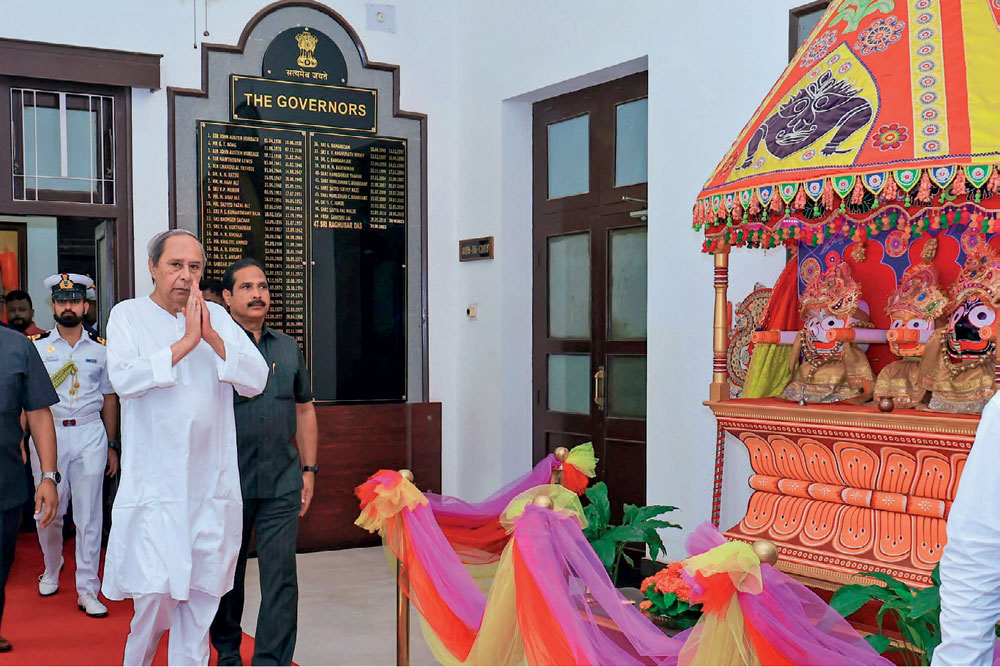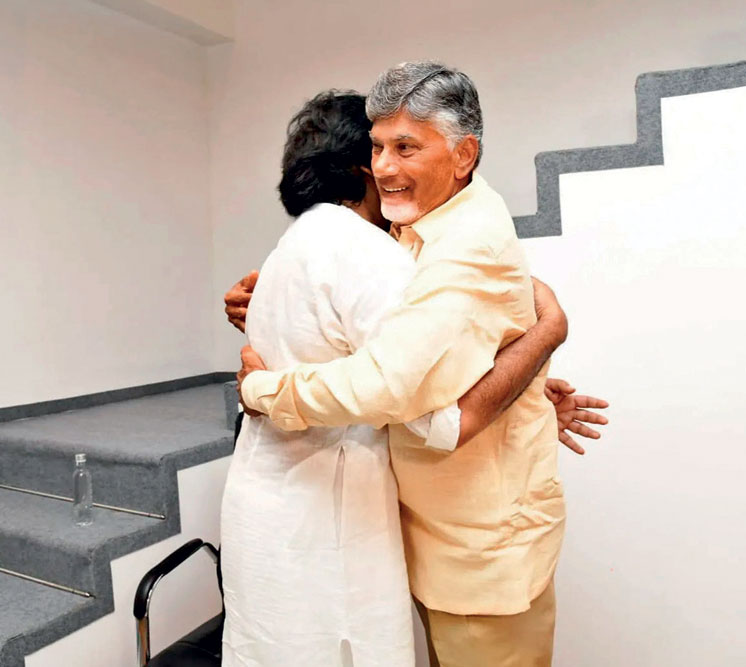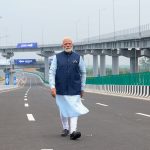The Juggernaut
BJP ends the Patnaik era with a landslide
 Siddharth Singh
Siddharth Singh
 Siddharth Singh
Siddharth Singh
 |
07 Jun, 2024
|
07 Jun, 2024
/wp-content/uploads/2024/06/Juggernaut1.jpg)
Dharmendra Pradhan (centre) celebrates BJP's victory with Bhupender Yadav and Baijayant Panda (left), Bhubaneswar, June 4, 2024
IF THE BHARATIYA JANATA PARTY (BJP) suffered some setbacks in some states, the party also witnessed the lotus bloom in Odisha, a state where it is now the single-largest party in the Assembly with a majority as well as winning all but one seat in elections to Lok Sabha. In the results declared on Tuesday, June 4, BJP won 78 seats in the 147-member state Legislative Assembly, leaving the ruling Biju Janata Dal (BJD) at a distant second spot with 51 seats. In the parliamentary contest, BJP won 20 of the 21 seats, leaving Congress with one.
This is a historic change in Odisha where Naveen Patnaik was at the helm as chief minister for 24 years from 2000 until Wednesday, June 5, when he resigned. This is a stunning reversal of fortunes for BJD and Patnaik in particular. Patnaik lost from the Kantabanji Assembly constituency at the hands of BJP’s Laxman Bag with a margin of 16,344 votes. Patnaik had contested from two seats, Kantabanji and from Hinjili in Ganjam district, which he won. But even this victory came with a greatly reduced margin. This time, Patnaik won the seat by a margin of just 4,636 votes compared to 2019 when he had won the seat by a margin of 94,065 votes.
Patnaik’s choice of Kantabanji was dictated by a strategy designed to limit BJP’s influence in the party’s stronghold of western Odisha. To an extent, the strategy paid off: in six seats in the region—Padampur, Nuapada, Khariar, Junagarh, Lanjigarh and Dabugam—BJD prevailed. It is interesting to note that while BJD won these seats, at the parliamentary level, the same voters defeated the party. BJP won all the Lok Sabha seats under which these Assembly segments fall. BJD’s western Odisha strategy was like the proverbial winning of a battle to lose the war. It’s not just the chief minister who lost from Kantabanji but if one looks at the electoral map of Odisha, the state is awash with saffron from Rairangpur in its extreme north-eastern periphery bordering Jharkhand all the way to Malkangiri Assembly constituency in the southeast bordering Chhattisgarh and Andhra Pradesh. It is only in patches in between that BJD has managed to hold on.
One reason for BJP’s victory was strategic; another was the fatigue of Odisha’s voters with almost a quarter-century run of BJD in power. When the 2024 campaign kicked off earlier this year, there were signs that BJD and BJP might decide to ally with each other. But the idea was discarded very quickly. For one, it was not acceptable to the workers of the two respective parties and for another BJP’s leadership had realised over time how unpopular BJD had become as a governing party.
This was in evidence, of all places, in Ganjam district that is home to Patnaik’s Hinjili constituency as well as his former constituency, Aska. Of the 13 Assembly seats in the district, BJP won 11 and BJD only one, the chief minister’s constituency. Anyone who is familiar with Odisha’s economy would know the dire economic situation in Ganjam, one of the districts witnessing the highest level of migration for work in India. This was a blowback from the voters of the district who travel across the length and breadth of India and have seen development take root in different parts of the country in the past decade.

Reports from the grounds clearly indicated the electorate’s disappointment with BJD. The delivery of virtually all public goods, from healthcare to education and from water supply to furthering economic opportunities, was found wanting. Like governments led by regional parties elsewhere, BJD tried to ‘rebrand’ many of the Central schemes, such as the one for distribution of food, but it did not work. The roadblocks in the way of fully implementing the Jal Jeevan Mission scheme that provides potable water also did not go down well with voters. In a state that is water-stressed and experiences extreme heat, this could have changed the quality of life for many people. But politics came in the way.
The roadblocks in implementing the Centre’s Jal Jeevan Mission scheme did not go down well with BJD voters. n a state that is water-stressed and faces extreme heat, this could have changed the quality of life for many. But politics came in the way
Andhra Pradesh gave another bit of good news to BJP. There, its alliance partner, the Telugu Desam Party (TDP), has emerged as the single-largest party and is now an important member of the National Democratic Alliance (NDA). After walking out of NDA in 2014 and spending a decade outside, TDP supremo N Chandrababu Naidu has clearly stated that his party will be a key member of the alliance. BJP has won three Lok Sabha seats from Andhra Pradesh and also has eight members in the new Assembly.
The one unnoticed trend was from Punjab where the Aam Aadmi Party (AAP), which styled itself as a challenger to BJP, lost in its key stronghold, Malwa. Here, the party’s four candidates, Gurmit Singh Khudian from Bathinda, Jagdeep Singh Kaka Brar from Ferozepur, Balbir Singh from Patiala, and Ashok Parashar Pappi from Ludhiana were trounced. AAP could win only one seat in Malwa, Sangrur, where its candidate Gurmeet Singh Meet Hayer, a minister in the Bhagwant Mann cabinet, won by a strong margin of 1,72,560 votes. The party’s other two victories, in Hoshiarpur and Anandpur Sahib Lok Sabha constituencies, were outside its core area of strength. This picture stands in contrast to the stupendous scale of AAP’s victory in the 2022 Assembly elections where it won 91 of the 117 seats, a majority of which came from the Malwa region that accounts for 69 of the 117 seats. It is here that the party won just one of the seven Lok Sabha seats. Congress won four of these seven seats.
These results are reflective of three different trends that can be observed in Punjab and particularly in Malwa. One, the victories that AAP has secured are more in the nature of reaction and anger against the Shiromani Akali Dal (SAD) and not a positive vote for AAP. Two, SAD continues to be on a sticky wicket as it has managed to win only one seat, Bathinda, where Harsimrat Kaur Badal won. In every other constituency that SAD contested, it did not even get to the second position. This deep-seated anger against SAD is concentrated in Malwa but also prevails across the state.

The most important trend, one of importance at the national level, is that AAP is not quite the challenger to BJP that it once fancied itself as. The party contested 22 seats in Punjab, New Delhi, Haryana, Gujarat, and Assam. It won only three of these seats and failed to open its account in New Delhi, where it is the ruling party. In Gujarat, where it bargained hard for the Bharuch seat with Congress, its candidate lost by a margin of more than 85,000 votes to its nearest rival. This, after its sustained campaign in Gujarat for years on end. It has participated in elections across all levels in the state, from local bodies to Parliament. But it is yet to taste success. In Assam, where it contested from Dibrugarh and Sonitpur, the party lost these seats by margins of 5,55,898 and 7,42,740 votes, respectively.
AAP’s huge geographic overreach—from New Delhi to Assam and from Punjab to Gujarat—speaks of its national ambitions but extremely limited reach. One major reason for its being checkmated in this ambition is its very nature. AAP began as an anti-system party but ended up cooperating with Congress, the very party against which it had raised its voice in the heady days of 2013 when it railed against corruption in the national capital. At that time and even later, AAP was thought of as a challenger to Congress and seen as an attractive and refurbished alternative to India’s grand old party. In due course, this allowed AAP to imagine itself as a challenger to BJP. This was bolstered by its success in forming a government in Punjab in 2022. Since then, it has been delivered one rude shock after another across India. Its inability to win seats in Lok Sabha beyond its confines in Punjab testifies to those limitations. Even in Punjab, the party has been unable to meet the expectations of the electorate which remain elevated and beyond the means of a fiscally constrained government. Politically, AAP’s challenge has come a cropper because of the very special set of circumstances in which it acquired power in Delhi and in Punjab. These factors are not replicated anywhere else in India.
BJP’s ally, the Chandrababu Naidu-led TDP, has emerged as the single-largest party in Andhra Pradesh and is now an important member of NDA. BJP has won three Lok Sabha seats from the state and also has eight members in the new assembly
The message that Odisha, Andhra Pradesh and Punjab convey to BJP is a positive one. For one, the party has expanded its footprint in Odisha from being a strong opposition party to the ruling party. Its victory in both the Assembly and Lok Sabha elections gives weight to the fact that BJP is now a party represented in almost all Indian states and Union territories. It also demolishes the pernicious claim that there is a North-South divide and that BJP is ‘weak’ in the state that abuts India’s eastern seaboard. If anything, at one time, BJP had a very limited presence in the stretch of territory from Tamil Nadu to West Bengal. That has changed rapidly in recent years and even more on June 4. A similar story comes out of Andhra Pradesh where BJP now has three MPs. The party had three MPs from the state in 2014, a tally that went down to zero in 2019, and it has now scored once again. It also has eight members in the new Assembly and will be a partner in the coalition government with TDP and the JanaSena Party (JNP).
The same message comes through from the travails of AAP. It is certainly not a challenger to BJP, if it ever was one on the ground. But its shock defeat in 19 out of 22 seats it contested highlights one important fact: India has no need for anti-system parties. Pan-India politics is characterised by high-entry barriers for individuals and parties. But unlike Western democracies, where voters are disillusioned and political parties are atrophying, India is a robust, vibrant and noisy democracy. The party-system in India is the very opposite of what prevails in the West: it is well-oiled and regularly delivers clear verdicts at all levels, from local bodies all the way to Parliament. In the last decade, there has been no logjam at any legislative level. This leaves very little room for anti-system parties like AAP. That is the message from the 2024 parliamentary election.

/wp-content/uploads/2025/09/Cover-Modi-scaled.jpg)












More Columns
I Missed A Flight Thanks To Robert Redford, Plus He Took My Magazine! Alan Moore
Robert Redford (1936-2025): Hollywood's Golden Boy Kaveree Bamzai
Surya and Co. keep Pakistan at arm’s length in Dubai Rajeev Deshpande